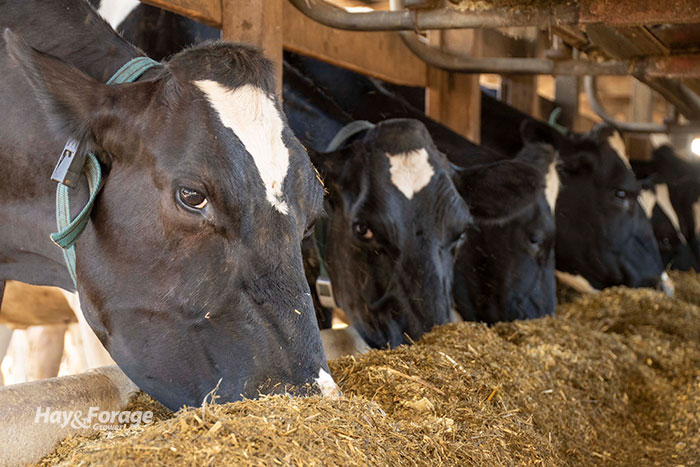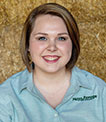
Methane accounts for only 10% of the greenhouse gases emitted in the United States. Of that, only 3.8% originate from enteric fermentation of dairy cattle. Still, the industry is under pressure to keep such emissions to a minimum. Farmers can affect how much methane cattle produce through diet changes, according to a recent article in Virginia Tech’s Dairy Pipeline newsletter.
Ruminants have a gut full of microbes that all have preferences when it comes time for them to eat. Some microbes thrive on structural carbohydrates that can be found in forages, while others prefer nonstructural carbohydrates like the ones found in grains. The latter operate at a lower rumen pH.
The forage-loving microbes that prefer the structural carbohydrates are methanogens, producing higher amounts of methane than those that prefer nonstructural carbohydrates. Alexis Hruby, a Ph.D. graduate student at Virginia Tech, explains how adjusting the forage amount, type, and quality in cattle diets can influence the production of methane from dairy cattle.
Amount
Researchers at the University of Wisconsin - Madison investigated how a higher forage to concentrate ratio impacts methane yield in lactating dairy cows. “When neutral detergent fiber (NDF) digestibility decreased in higher forage to concentrate diets, methane yields increased,” Hruby explains.
Type
Another study conducted by the University of Wisconsin - Madison evaluated types of forages; this study used alfalfa silage and corn silage. The impacts on methane yields were not as linear as the previous study. The methane yield data rose and fell in patterns that showed the fermentation of corn silage NDF yielded more methane than the fermentation of alfalfa silage NDF.
Quality
Finally, a study at Wageningen University in the Netherlands revealed the maturity of the forages can also impact methane output. Late-maturity silage had lower NDF digestibility and higher methane yields than silages at early and medium maturity.
Hruby concluded, “Forage characteristics are important to consider when focusing on the methane contributions made by dairy cattle.”

C.J. Weddle is serving as the 2020 Hay & Forage Grower editorial intern. She currently attends Mississippi State University, majoring in agricultural education, leadership, and communications. She grew up on a farm in Vardaman, Miss., where her family raises sweet potatoes and soybeans.

